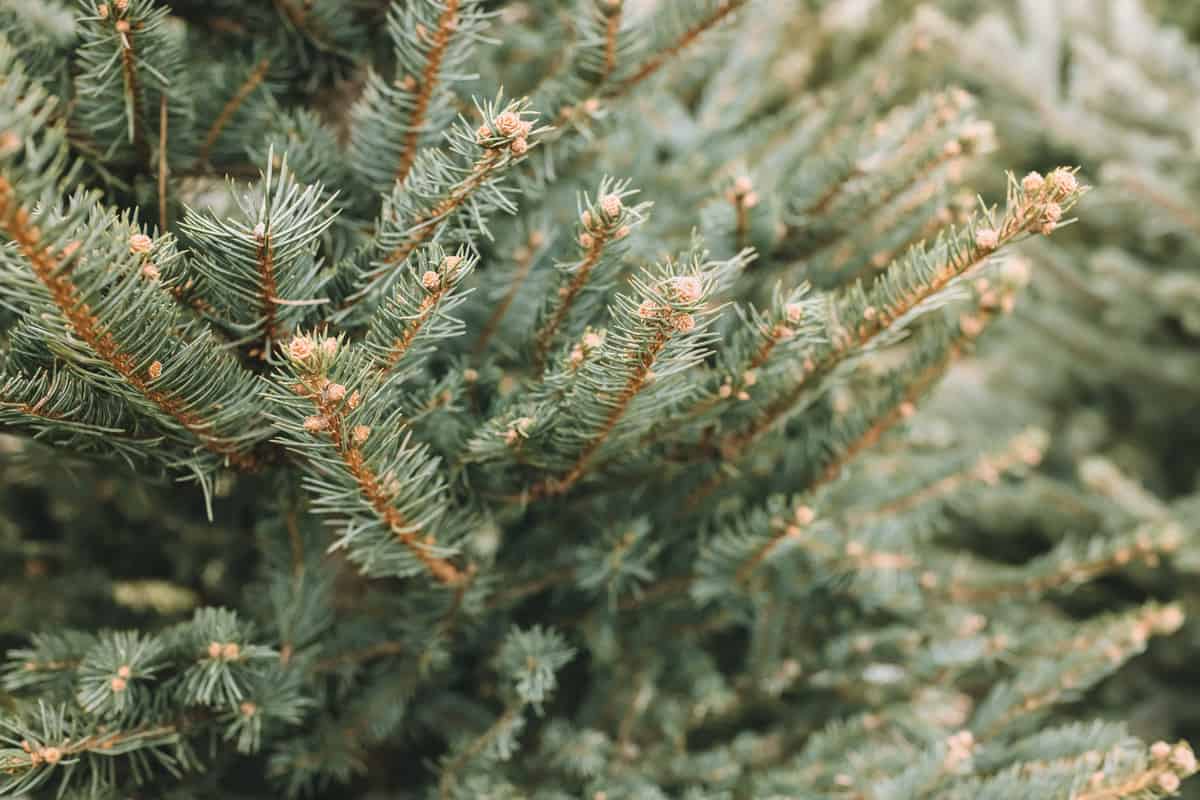For many people, finding a Christmas tree is an essential part of the holiday season. People consider many factors when looking for the perfect Christmas tree, including whether they want a real or fake tree, what to decorate the tree with, and, of course, size. What size Christmas tree should you get for your ceiling height?
Regardless of the height of your room, a Christmas tree should be 6 inches shorter than the ceiling. This allows room for whatever tree topper that you might choose.
There's more to selecting a Christmas tree than knowing the perfect height. You need to know what tree shape you want if you want a real or fake tree, and how decorations will affect your tree. We cover these topics and more in this post. Keep reading to learn more about Christmas trees.
![Interior of a modern house with a Christmas tree on the corner celebrating the Holidays, What Size Christmas Tree? [By Ceiling Height]](https://gardentabs.com/wp-content/uploads/2022/08/What-Size-Christmas-Tree-By-Ceiling-Height-Pin-683x1024.jpg)
What Size Christmas Tree by Ceiling Height
The standard ceiling height for modern homes is about 8 to 9 feet. However, some homes have low ceilings, about 7 feet, and some have higher, vaulted ceilings, which can range from 10 to 14 feet.
- If you have standard ceilings [8 to 9 feet], your tree should be 7.5 to 8.5 feet.
- If you have low ceilings [7 feet], your tree should be 6.5 feet.
- If you have high ceilings [10 to 14 feet], your tree should be 9.5 to 13.5 feet.
![Interior of a modern house with a Christmas tree on the corner celebrating the Holidays, What Size Christmas Tree? [By Ceiling Height]](https://gardentabs.com/wp-content/uploads/2022/07/What-Size-Christmas-Tree-By-Ceiling-Height.png)
What Christmas Tree Shape Should You Choose?
The type of Christmas tree shape greatly depends on factors such as your personal preference and the space you have. There are several different types of Christmas tree shapes. Some of the most common Christmas tree shapes include: full, wide, slim, flatback, and sparse.
Full
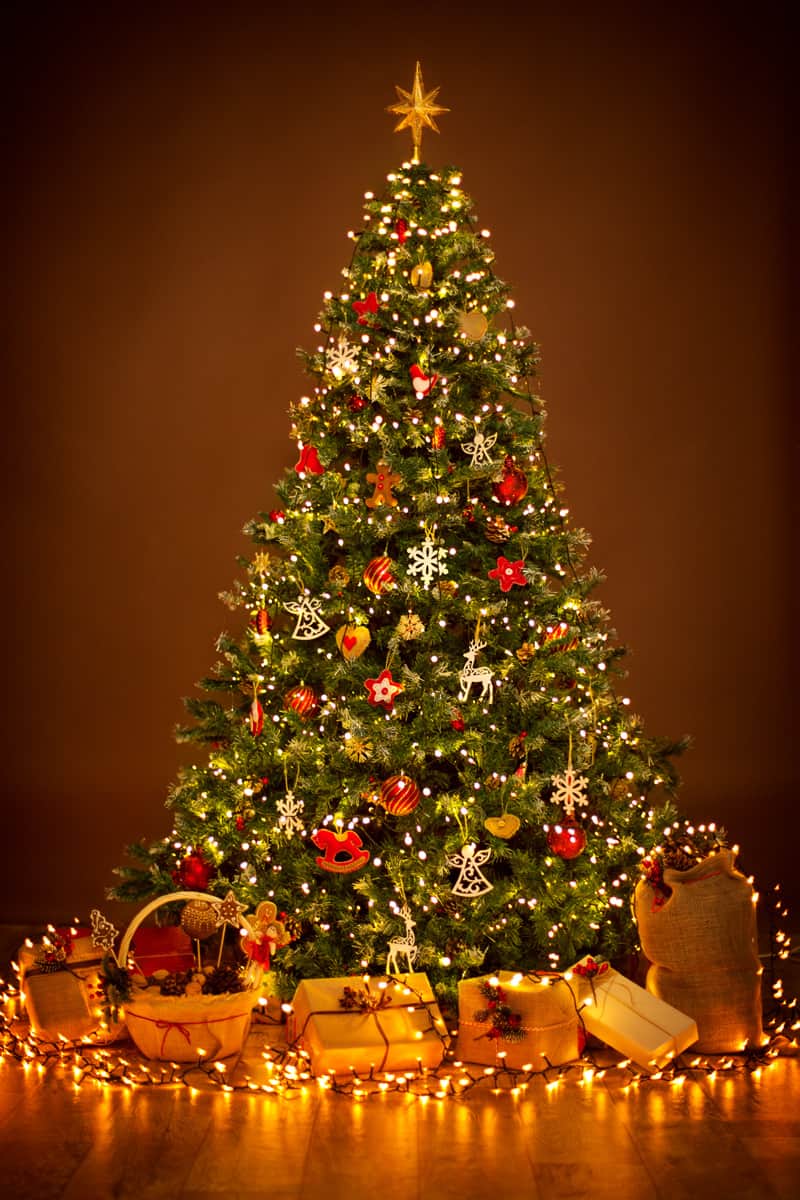
A full Christmas tree is probably what most people envision when they think about Christmas trees. Full trees are about 1.5 times taller than they are wide. So, if a full Christmas tree is 6.5 feet tall, it will be about 9.75 feet wide.
Because full is one of the most popular and traditional shapes, this type of tree is perfect for people looking to add a classic vibe to their homes.
Wide
Wide trees are even fuller than full trees. This type of Christmas tree is perfect for those who want to add many decorations to the tree, as a wider tree means more space. However, since these trees take up more space, they're not ideal for small homes. So, before investing in a wide Christmas tree, consider the amount of space you have.
Slim
As you can assume, a slim Christmas tree has a smaller width than full and wide Christmas tree. Slim trees are usually around two times taller than they are wide. So, if a slim tree was 6.5 feet tall, then it would be about 3.25 feet wide.
Slim trees are very beneficial if you are working with a small space, as they take up less room. They provide all the beauty that a full or wide tree does but in a slimmer form.
Flatback
A flatback is a very unique type of Christmas tree. It looks no different than a typical full Christmas tree at first glance, with little space between the branches. However, as the name suggests, the back of the tree is flat, so it rests against a wall and takes up less space.
Flatback trees are the perfect option for those who want to save space but want a fuller tree instead of a slimmer tree.
Sparse
Sparse trees offer an authentic, natural aesthetic. They mimic the appearance of real trees because they have gaps between their branches. These gaps allow people to highlight ornaments better. So, if dressing up your tree is essential to you, consider investing in a sparse tree to emphasize the beauty of the decorations.
Should You Choose a Real Christmas Tree or a Fake One?
Whether you should choose a real or fake Christmas tree depends on how you feel about the advantages and disadvantages of each type of tree. Let's look at the benefits and drawbacks of both real and fake trees to determine which type is best for you.
Advantages and Disadvantages of Real Trees
One of the major advantages of real trees is that they're better for the environment in several ways. Real trees can grow where other crops cannot grow, they can be recycled, and they can take in a considerable amount of carbon dioxide during their lifetimes.
In addition to helping the environment, real trees offer a great experience. Many families love going to Christmas tree farms and deciding on the perfect tree for their home.
However, though real trees are environmentally friendly and can foster family traditions, they can be a hassle to bring into your home. They also drop needles, which are messy and can trigger allergies by carrying allergens. So, a real tree may not be the best option if you wouldn't enjoy cleaning up needles or have pretty bad allergies.
Advantages and Disadvantages of Fake Trees
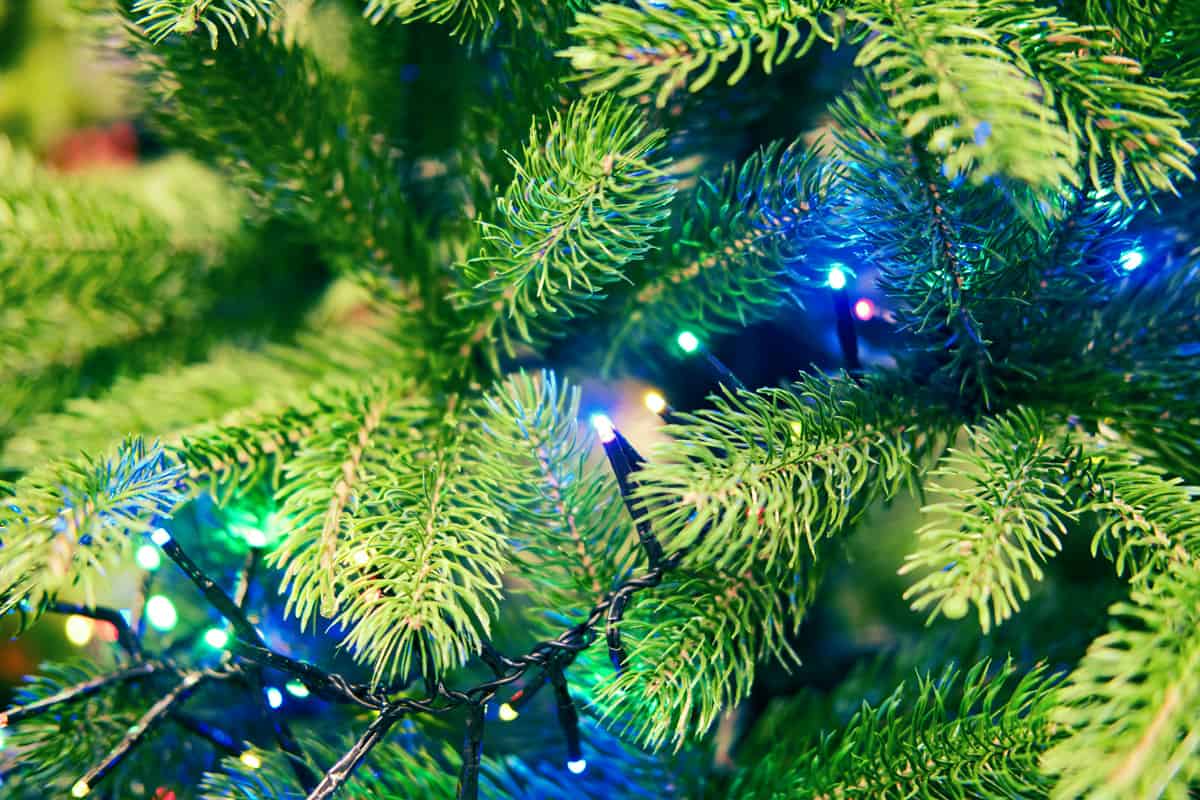
Perhaps the most significant advantage of fake trees is the money they save people. In 2018, a fake tree was, on average, $30 more than a real tree. However, as they drop their needles, you must buy real trees annually. Generally, you can use most fake trees for about 7 to 9 years, saving a lot of money.
Fake trees are also easier to bring into your home and set up than real trees are. They're an excellent option for those who don't like much of a mess, as they don't drop needles.
However, a major drawback of fake trees is that they're not environmentally friendly. Once you decide to get rid of a fake tree and buy a new one, your old tree will lay in a garbage dump for several years. Additionally, artificial trees are made from polyvinyl chloride [PVC], which is a non-biodegradable plastic that emits carcinogens when produced.
So, while fake trees are cheaper overall and easier to set up, steer clear of them if you're environmentally cautious.
How Do You Properly Care for a Real Christmas Tree?
If you choose to invest in a real Christmas tree, you must know how to care for it. Before installing your Christmas tree, it's important to install it in an area protected from sun, heat, and wind. An example of a good place to store the tree is a garage.
Once you decide that you're ready to install the tree in your home, ensure that the area you're installing the tree in is ready. Then, place your tree in your tree stand, tightening the bolts of the stand and the filling the base of it with water afterwards.
One of the most important things to remember is to keep the base of the tree stand filled with water. If the base is not filled with water, the tree's stump will become sealed with sap, preventing it from taking in any water.
The only way to break this sap seal is to cut the stump again, which causes a bit of a hassle. So, always ensure that your tree is properly watered!
How Do Decorations Affect Your Tree?
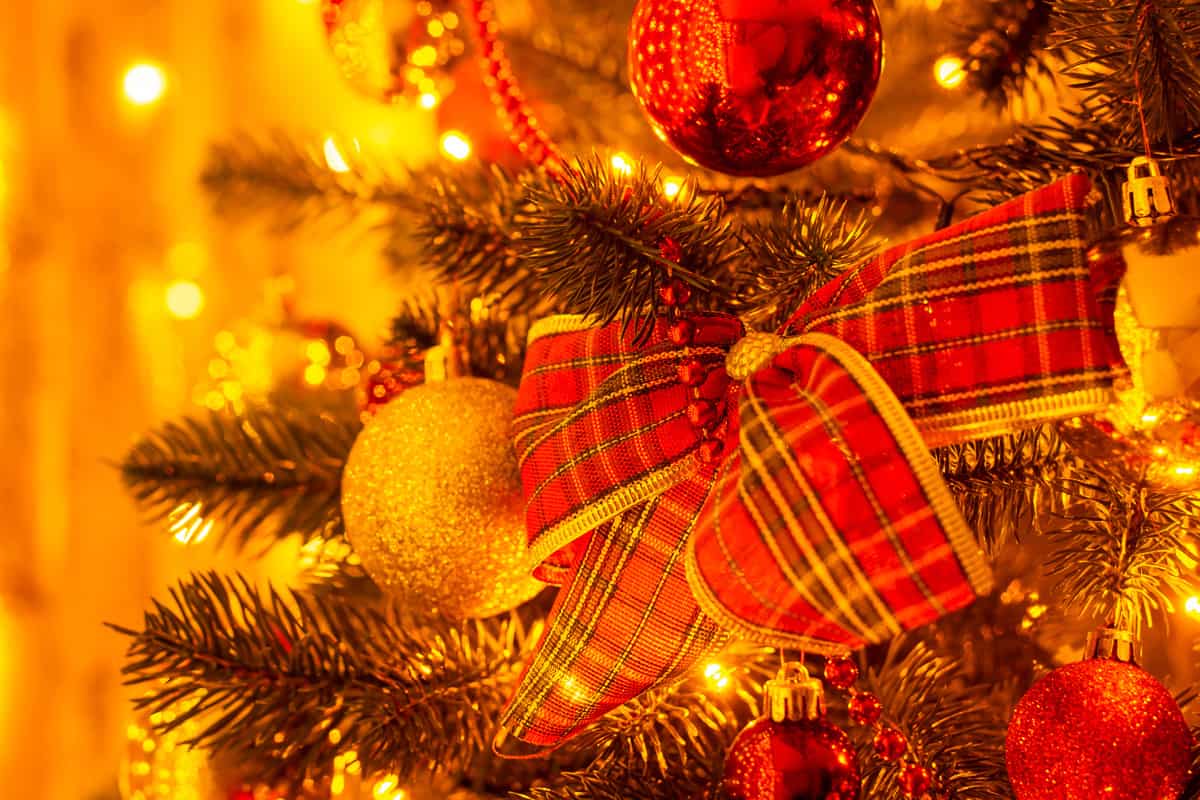
For many, decorating their Christmas tree is the best part of the holiday season. It's an act that allows people to express their creativity and bond with their families. It's even been proven to make people happier, as it increases dopamine! On top of all this, decorations greatly affect how your tree looks.
There are several decorations: ornaments, garlands, lights, and ribbons. The type of decoration you choose can significantly impact your tree's appearance.
For example, ornaments look great on any tree, but putting them on a sparse tree may accentuate their beauty. Conversely, placing a garland on a sparse tree is probably a bad idea, as the branches are more spread out.
So, because decorations affect your tree's appearance, it's essential to approach them thoughtfully.
In Closing
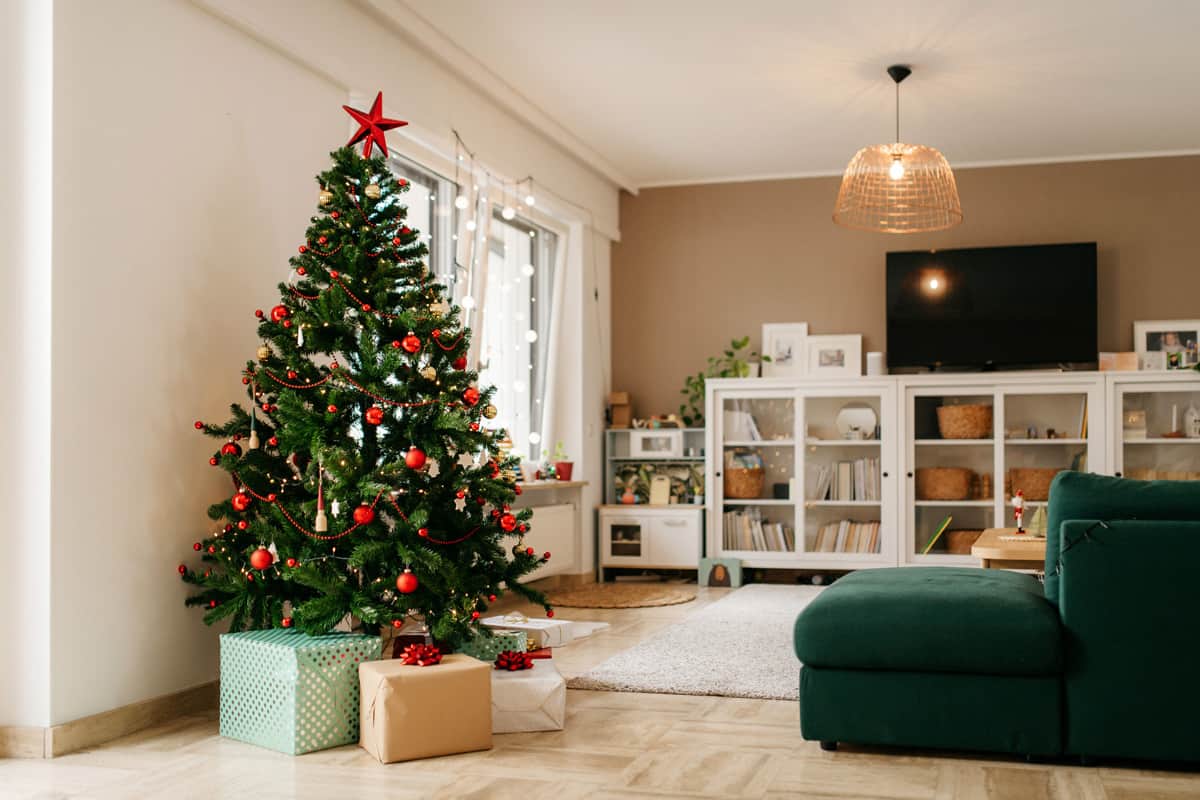
Christmas trees should always be about 6 inches shorter than your ceiling. In addition to considering size when selecting a Christmas tree, consider tree shape and whether you want a real or fake tree. Also, remember how decorations can affect your tree's appearance when decorating your tree.
Before you go, check out some of our other articles:

